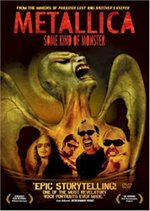Movie Review
Playboy.com
October 2004
Rating: Three out of Four Bunnyheads

In Texas, high school football isn’t just a varsity sport; it’s a way of life. Friday Night Lights, adapted from H.G. Bissinger’s 1990 best-seller, hits you with that concept like a maniacal middle line backer.
As the movie begins, a stunning montage – a truck kicking up dust on the dirt roads of Odessa, a mother scolding her son for forgetting his playbook and journalists mobbing high school football players – lets you know just how serious this town takes its team. Coach Gary Gaines (Billy Bob Thornton) is expected to win the state championship, mostly on the strength of cocky, multi-talented running back Boobie Miles (Derek Luke). When Boobie busts his knee and the team begins to slide, the town’s hopes are placed on the shoulders of shaky, withdrawn quarterback Mike Winchell (Lucas Black), self-critical tailback Don Billingsley (Garrett Hedlund) and third-string back Chris Comer (Lee Thompson Young). Squeaking into the playoffs after winning a coin toss, the team gels around Gaines’s grit and surges toward a championship showdown with the mammoth team from Dallas.
An uplifting sports saga that never resorts to cheap sentimentality, the story of the Permian Panthers’ 1988 dream season should become a classic. The realistic cinematography and soaring soundtrack by instrumental rockers Explosions in the Sky give it an energetic edge. More importantly, the stoic ending guarantees this powerful real-life story doesn’t fall prey to Hollywood hokum.


